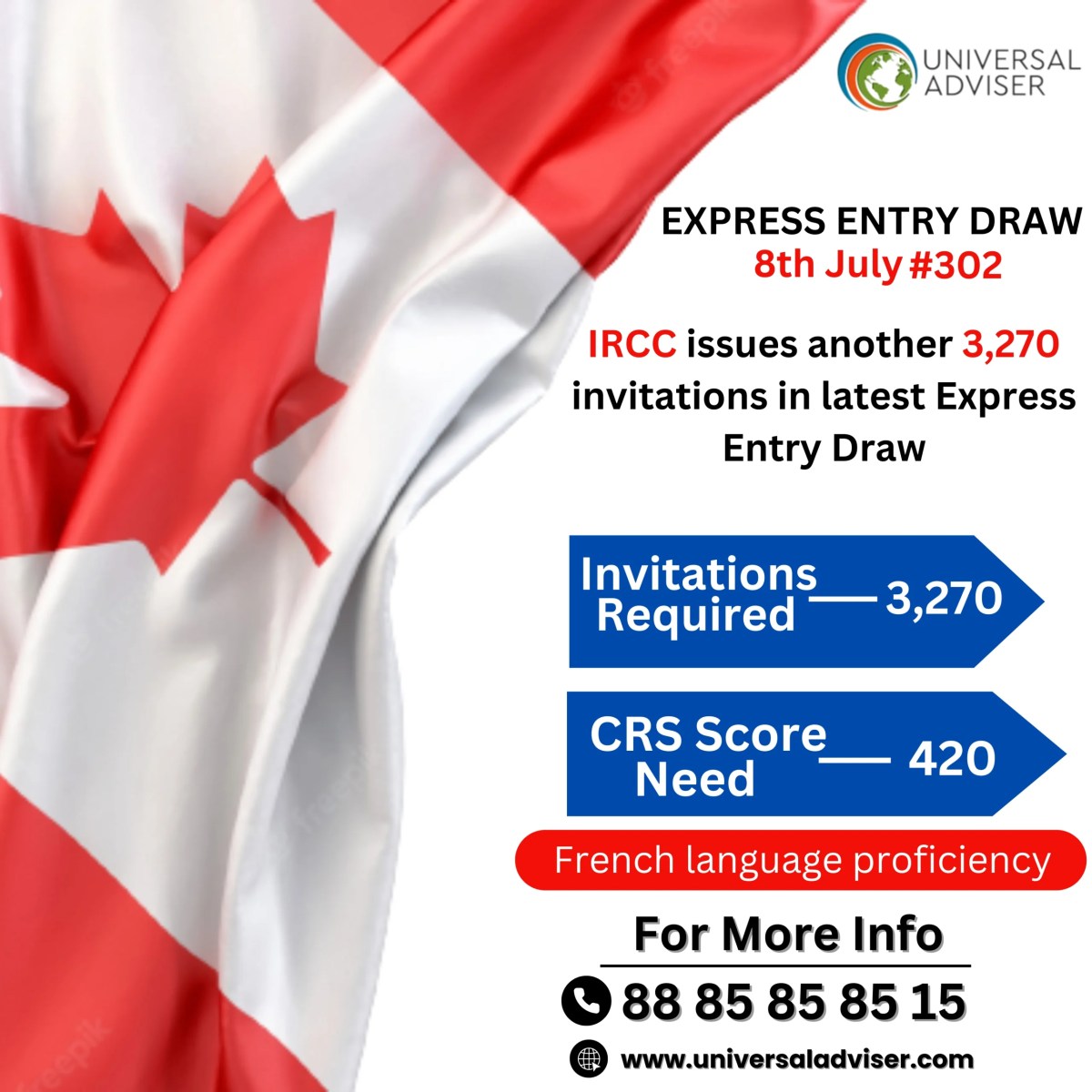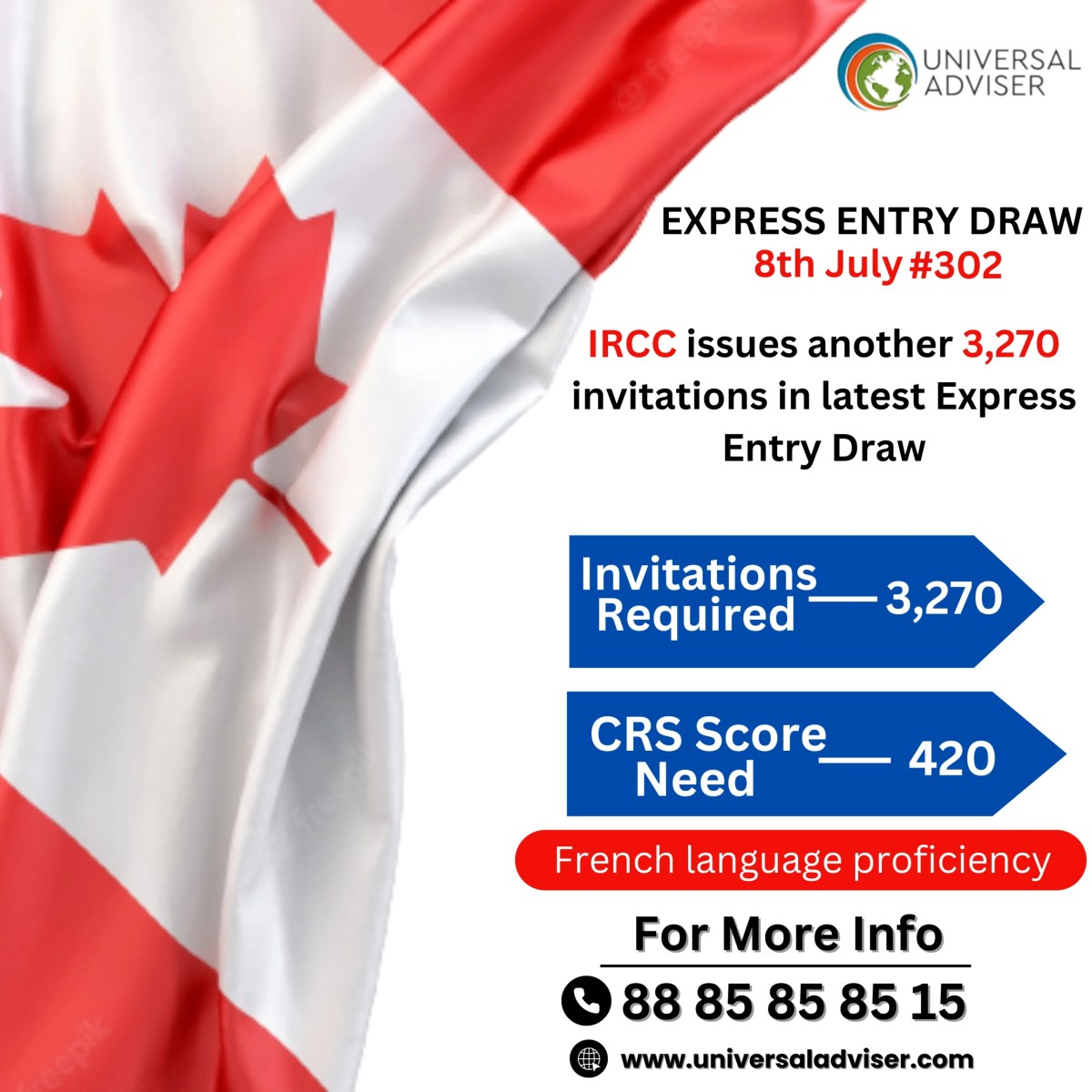IRCC Express Entry draws offer a pathway to Canadian permanent residency. This system uses a points-based ranking system, the Comprehensive Ranking System (CRS), to select candidates from a pool of applicants. Understanding how the CRS works, what factors boost your score, and the different immigration programs available is key to a successful application. This guide will walk you through the process, step-by-step, equipping you with the knowledge to navigate the Express Entry system effectively.
We’ll cover everything from building a strong Express Entry profile to maximizing your CRS score, including strategies for improving language proficiency, securing a job offer, and navigating the post-draw procedures. We’ll also address common concerns and misconceptions, helping you confidently pursue your Canadian dream.
Understanding IRCC Express Entry Draws
The Canadian Immigration, Refugees and Citizenship Canada (IRCC) uses the Express Entry system to manage applications for permanent residence. It’s a points-based system where candidates are ranked based on factors like education, work experience, language proficiency, and adaptability. Regular draws invite the highest-ranking candidates to apply for permanent residency.
So you’re eyeing the IRCC Express Entry draw? Landing a spot means you’re on your way to Canada! Knowing about potential financial boosts, like the upcoming changes mentioned in this article on the canada january 2025 OAS boost , can help you plan your budget once you arrive. This is especially helpful as you settle in and get started with your new life.
Remember to check the IRCC website for the latest draw information.
Express Entry System Mechanics and Draws, Ircc express entry draw
Express Entry operates through a pool of candidates who submit their profiles. IRCC conducts regular draws, selecting candidates with the highest Comprehensive Ranking System (CRS) scores. The number of candidates invited in each draw varies.
Factors Influencing Comprehensive Ranking System (CRS) Score
Several factors contribute to a candidate’s CRS score. Key elements include age, education, work experience, language proficiency (English and/or French), arranged employment, and a provincial nomination. Each factor carries a specific point value.
Express Entry Program Streams
Express Entry comprises several program streams: the Federal Skilled Worker Program (FSWP), the Federal Skilled Trades Program (FSTP), and the Canadian Experience Class (CEC). Each stream has specific eligibility requirements.
Eligibility Criteria Comparison
| Program Stream | Education | Work Experience | Language Proficiency |
|---|---|---|---|
| Federal Skilled Worker Program (FSWP) | Post-secondary education credential | At least one year of skilled work experience in the past 10 years | Minimum CLB 7 in English or French |
| Federal Skilled Trades Program (FSTP) | May or may not require post-secondary education depending on trade | Significant skilled work experience as a qualified tradesperson | Minimum CLB 5 in English or French |
| Canadian Experience Class (CEC) | May or may not require post-secondary education depending on work experience | At least one year of skilled work experience in Canada | Minimum CLB 5 in English or French |
Factors Affecting Draw Invitations

IRCC considers various factors when selecting candidates. While a high CRS score is crucial, other elements can influence selection, including the specific needs of the Canadian labor market and regional economic priorities.
Impact of Job Offers and Provincial Nominations
A job offer from a Canadian employer significantly boosts a candidate’s CRS score, as does a provincial nomination. These additions can substantially improve chances of receiving an Invitation to Apply (ITA).
So, you’re keeping an eye on the IRCC Express Entry draw, hoping for that invitation? It’s a bit of a waiting game, but remember, life events can impact your plans. For instance, check out the current situation with the ontario colleges faculty strike , as it could affect potential study permits or applications if you’re planning on studying in Ontario.
Keeping tabs on major events like this alongside the IRCC draws is key for effective immigration planning.
Role of Language Proficiency
Strong language proficiency in English and/or French is vital. Higher scores in language tests like IELTS or CELPIP directly translate to higher CRS points, increasing the likelihood of selection.
Examples of Successful Express Entry Applications
Successful applicants often demonstrate a combination of high education, relevant work experience, strong language skills, and sometimes a job offer or provincial nomination. For example, a software engineer with a master’s degree, several years of experience, and a high IELTS score would have a strong profile.
Preparing an Express Entry Profile
Creating a comprehensive and accurate Express Entry profile is essential. This involves gathering necessary documents, accurately assessing eligibility, and presenting information clearly.
Step-by-Step Guide for Profile Creation
- Gather all required documents (education credentials, work experience letters, language test results).
- Create an online Express Entry profile, accurately inputting all information.
- Upload supporting documents.
- Regularly update the profile with any changes in circumstances.
Checklist of Required Documents
- Educational credentials
- Work experience letters
- Language test results (IELTS/CELPIP)
- Proof of funds
Submitting an Express Entry Profile
The process involves completing the online application, providing accurate information, and uploading all supporting documentation. Reviewing the application carefully before submission is crucial to avoid delays.
Self-Assessment of Eligibility Criteria

Carefully review each program stream’s requirements to determine eligibility. Use the IRCC website’s tools to assess your qualifications before creating a profile.
Strategies for Maximizing CRS Score
Improving your CRS score increases your chances of receiving an ITA. Several strategies can help achieve this.
Improving Language Proficiency Scores
Dedicated study and practice are key to improving IELTS/CELPIP scores. Utilizing preparation materials and taking practice tests can significantly enhance results.
Obtaining a Job Offer from a Canadian Employer
Networking, actively searching job boards, and applying for positions that align with your skills are essential. A valid job offer adds substantial points to the CRS score.
Applying for a Provincial Nomination
Research provinces with nomination programs aligning with your skills and experience. Meeting their specific requirements can lead to a significant CRS boost.
So you’re prepping for the IRCC Express Entry draw, right? That’s awesome! Between submitting applications and refreshing your email, you might need a serious graphics upgrade for all that data crunching – maybe check out the specs on the nvidia geforce rtx 5070 ti for a smooth experience. Anyway, back to the Express Entry draw – good luck!
Pathways to Increase CRS Scores
Increasing education level, gaining further work experience, and improving language proficiency are all effective methods. A combination of these approaches yields the best results.
Post-Draw Procedures

Receiving an ITA initiates the next phase of the application process, requiring prompt action and careful attention to detail.
Steps After Receiving an Invitation to Apply (ITA)
- Review the ITA carefully.
- Gather all necessary documents.
- Complete the application form accurately.
- Submit the application within the deadline.
Timeline for Completing the Application Process
Applicants have a limited timeframe to complete their application after receiving an ITA. Timely submission is critical to avoid delays.
Common Mistakes and How to Avoid Them
Common mistakes include incomplete applications, inaccurate information, and missing documents. Thorough preparation and careful review minimize these errors.
Requirements for Medical Examinations and Background Checks
Successful applicants undergo medical examinations and background checks as part of the process. These are mandatory steps for obtaining permanent residency.
Visual Representation of the Process
The Express Entry process can be visualized through a flowchart and diagram to illustrate the different stages and timelines.
Flowchart of the Express Entry Process
A flowchart would begin with profile creation, then proceed through the stages of ranking in the pool, draw invitations, ITA receipt, application submission, medical exams, background checks, and finally, permanent residency grant. The flow would clearly show the sequential nature of the process and the decision points along the way.
Diagram of Application Process Stages and Timelines
A diagram would visually represent the various stages, including profile creation, time spent in the pool, the draw, the ITA issuance, application completion, processing times, and the final grant of permanent residency. Each stage could be depicted with a box indicating the duration involved, creating a clear visual representation of the timeline.
Descriptive Account of the Visual Representations
Both the flowchart and the diagram would provide a clear and concise visual overview of the Express Entry process, making it easier to understand the steps involved and the associated timelines. They would serve as valuable tools for applicants to plan and manage their applications effectively.
Final Wrap-Up
Successfully navigating the IRCC Express Entry draw requires preparation, strategy, and a clear understanding of the process. By focusing on maximizing your CRS score through language proficiency, job offers, or provincial nominations, and by meticulously preparing your application, you significantly increase your chances of receiving an Invitation to Apply (ITA). Remember, while this process can seem daunting, with careful planning and the right information, achieving your goal of Canadian permanent residency is well within reach.
Good luck!
Q&A: Ircc Express Entry Draw
How often are Express Entry draws held?
The frequency of draws varies. IRCC announces draws as needed, so there’s no fixed schedule.
What happens if I don’t get an ITA in a draw?
Your profile remains in the pool for a year unless you update it. You can continue to improve your CRS score and wait for future draws.
Can I apply under multiple Express Entry programs?
No, you can only apply under one program at a time. Choose the program that best suits your profile and circumstances.
What if my CRS score is low?
Focus on improving your score through education, work experience, language proficiency, or obtaining a job offer or provincial nomination.
